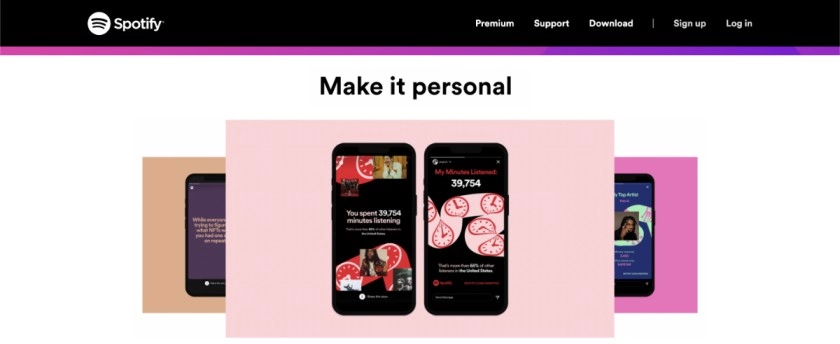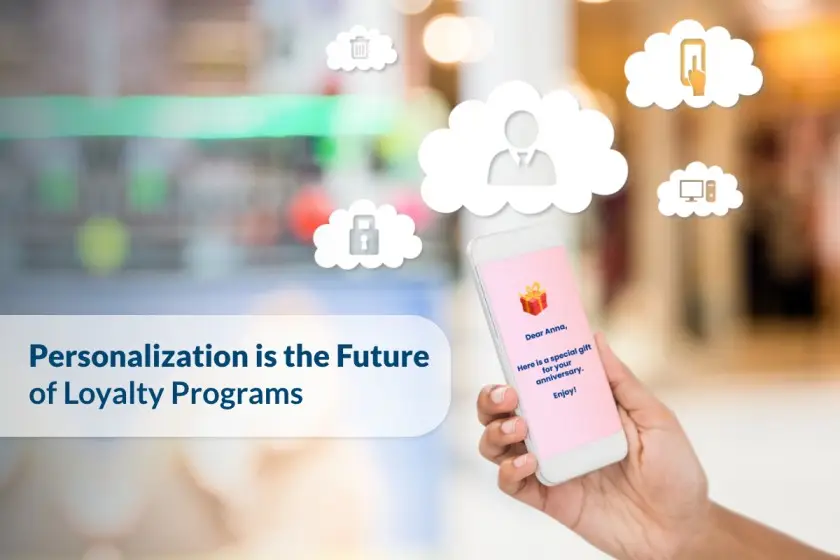We are in the golden age of digital marketing, and consumers today are relentlessly subjected to brands seeking their attention. On average, consumers today receive as many as 10,000 brand messages per day.
With greater incentives and easier processes to switch brands, customer retention has become a significant challenge for brands today. Brands need to create long-term associations with the consumer, especially millennials, the largest generation in US history.
While loyalty programs have been an effective retention method for decades, there is a need to revolutionize their approach to cater to millennial and Gen-Z needs. And this process begins with personalization.
A personal touch: Old tactics no longer suit new-age millennials
The abundance of options has helped millennials opt for brand solutions that match their preferences, values, and beliefs. Furthermore, the growing presence of data analytics has allowed for a degree of consumer profiling that simply was not present before. These factors have created the need for loyalty programs that go beyond mere reward points to establish long-term relationships and sustain brand interactions in a landscape filled with competitors.
Personalization & loyalty: An interlinked connection
Brands with an active consumer base possess an invaluable asset: customer data. Loyalty programs today depend on customization and, in turn, provide even more valuable insights into individual customers. While millennials may be more accepting of their data being utilized for this process, they expect a greater degree of personalization and experiential rewards.
The role of leveraging personalization to enhance consumer experiences is clearly reflected by sales trends.
The Role of Data in Revamping Loyalty Programs

Data plays a crucial role in transforming the way loyalty programs stand today, and the program catalysts capable of leveraging data to drive consumer experience are the ones delivering maximum value. Zinrelo, for example, has a dedicated data sciences practice that uses consumer insights to create actionable, revenue-generating programs. Using machine learning and deep data analytics optimizes long-term customer value.
Starbucks is more than just a coffee giant – it’s a data giant. In fact, customers like the company because it understands their needs and rewards their loyalty. The coffee giant leverages customer data to achieve better results in the areas of product design, marketing, and store operations. This gargantuan volume of data is collected across transaction points and travels to the CRM via EDI and is further crunched and analyzed by an AI system helping Starbucks personalize its services and offerings to suit individual customers. As per Starbucks personalization initiative “is the single biggest driver” of improved spending per customer they have seen. Starbucks is the perfect example of how technology and data can help build customer loyalty.
Similar practices are also being leveraged by some of the world’s biggest brands. Nike has changed the offline personalization game, particularly through its flagship store in New York. NikePlus, the company’s loyalty program, provides customers with one-of-a-kind benefits, such as access to the Nike Speed Shop. People can only book appointments with Nike experts through this program, with members getting access to Nike Expert Studio.

The biggest player to perhaps leverage data to personalize offerings has been Spotify. In 2022, Prophet’s Brand Relevance Index placed Spotify as the #3 brand in the US. They have reached this spot through a data-first approach. The day-to-day algorithm provides personalized daily mixes, weekly playlists, and so on. However, its biggest game-changer might be the ‘Wrapped’ initiative, which takes over social media platforms at the end of each year as customers talk about their past year in music.
During the pandemic, Spotify tapped into consumer insights to launch group listening, helping users far away from each other listen to music together. Through data, they understood challenges and offered solutions that demonstrated a surprising degree of empathy along with a brand-new way of using the app.
Transparency is key
In 2018, a study by DMA showcased that nearly 60% of people in the US were ‘data pragmatists’, willing to share their data on a case-by-case basis, depending on the benefits. Therefore, consumers are ready to share data if there are evident benefits to them doing so. The same study also indicates that globally, customers want far more transparency when it comes to their data so that there is a degree of trust toward the organizations that use the data.
So even while revamping your loyalty program to serve customers better, they must understand that you are leveraging the data they provide to do so. Even more critically, they need to trust your brand to use these insights transparently.
Personalized loyalty: Give customers experiences they never had before
Loyalty programs are no longer basic reward systems that focus on accumulating points and providing cold, impersonal rewards. The frontrunners in each industry are transitioning away from basic point systems to more bespoke perks, such as early access to products and one-of-a-kind events. Brands that personalize offerings in a strategic and impactful manner shall continue to thrive while targeting millennials, and others shall face the risk of being left behind.
So, the question to ask before you launch a loyalty program is if it walks the line between monetary benefits and experiential services, creating an impact in the consumer’s heart and head. Zinrelo is empowering brands to use customer data effectively to create a personalized loyalty program.


